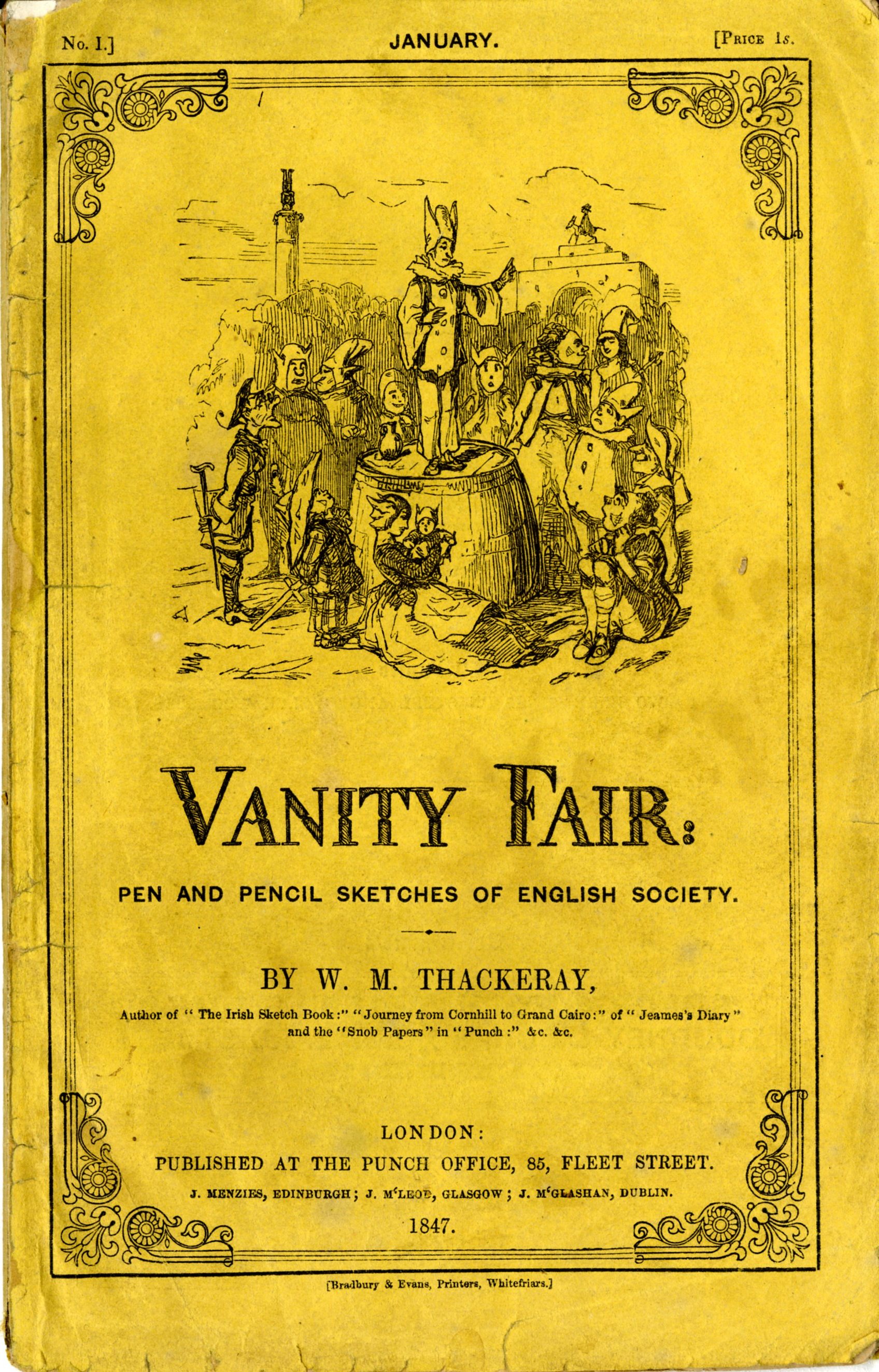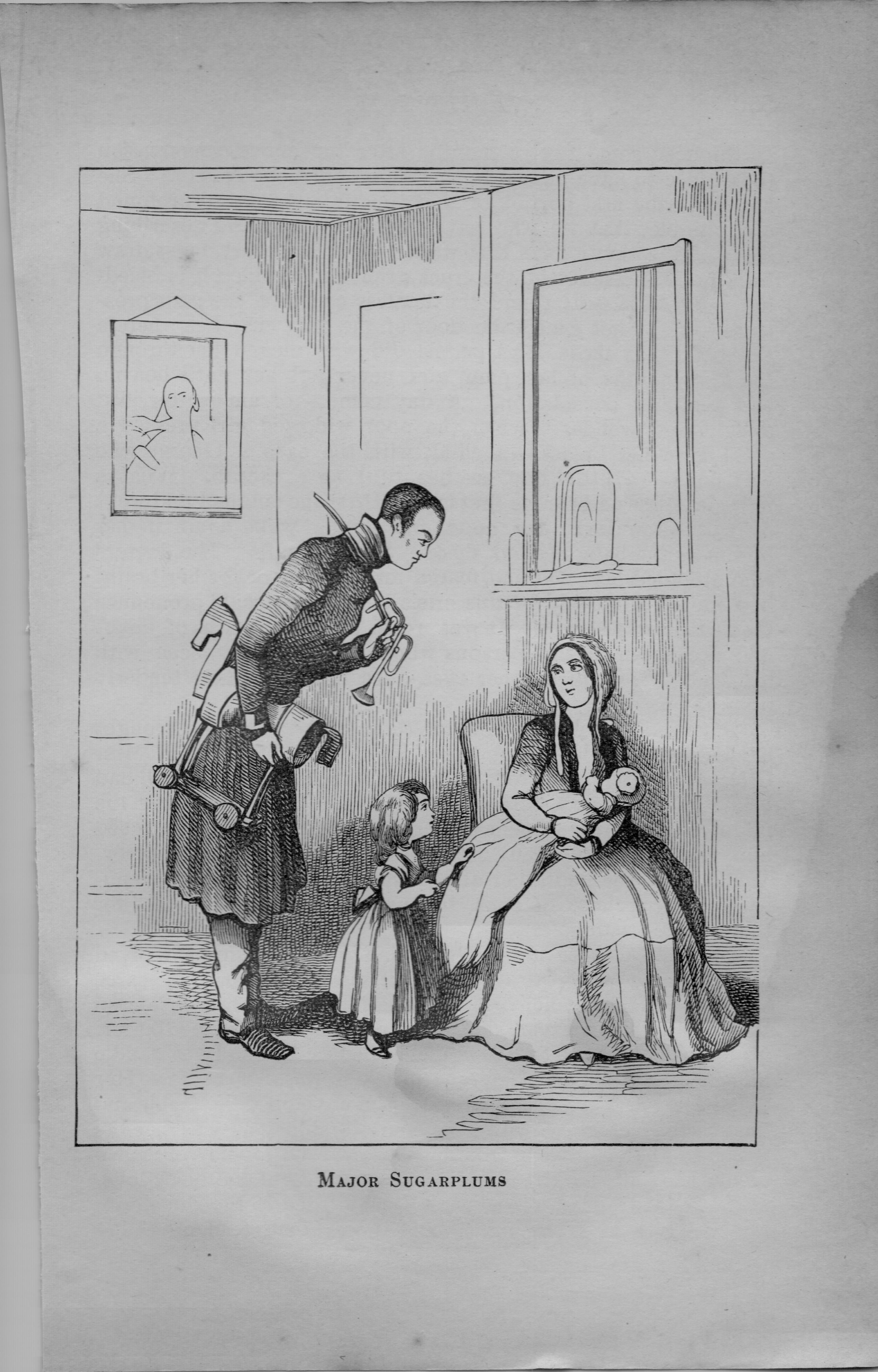The structure of Thackeray's monumental Vanity Fair is far more complicated than Austen's Pride and Prejudice. This timeline contains dates and events that will help us to navigate the novel, which is set in the Regency era but written during the Victorian period. Review this timeline as you read the novel. I invite you to add to this timeline as well. 
Timeline
Table of Events
| Date | Event | Created by |
|---|---|---|
| 18 Jul 1811 | Birth of William Makepeace ThackerayThackeray was born on July 18, 1811 in Kolkata, India |
Catherine Golden |
| 1813 | Becky Sharp and Amelia Sedley Begin their JourneysBecky Sharp and Amelia Sedley, accompanied by Jos Sedley, depart Miss Pinkerton's Academy for Young Ladies in Chiswick Mall. They soon arrive at the Sedley home in Russell Square, then a desirable location in London. Thackeray's accompanying illustration, "Rebecca's Farewell," is one of the most famous in Vanity Fair (1847-48). It shows Becky flinging the Johnson's Dictionary, a parting gift from Miss Jemima Pinkerton, as she leaves Chiswick Mall behind her. |
Catherine Golden |
| Summer 1813 | A Visit to VauxhallVauxhall, also known as the Royal Gardens or Victorian Pleasure Gardens, is an important location that Becky, Amelia, Jos, George Osborne, and Dobbin visit in Thackery’s Vanity Fair. The outdoor space was the center of entertainment, defining London’s nightlife with music and dance, fireworks and food. At Vauxhall, Jos has a few too many drinks of rack punch—a sweet alcoholic drink—and disturbs the party with his intoxicated behavior: he sings and flirts with Becky, his “‘dearest diddle-diddle darling’” (66), who expected to receive a marriage proposal at the gardens. Dobbin, after spending most of the night carrying Amelia’s white cashmere shawl (an important Regency/Victorian object), steps in to save the party from total disaster: he escorts Jos Sedley back to his home. |
Emilka Jansen |
| 1815 to Spring | Honeymoons in BrightonIn Chapter XXII, we find ourselves in Brighton where Thackeray takes his two newlywed couples--Amelia and George Osborne and Becky Sharp and Rawdon Crawley. They stay at a hotel that matches the description of The Old Ship Hotel Brighton, which you can still visit today; Thackeray provides a description of the hotel in Chapter XXII, "A Marriage and Part of a Honeymoon" (p. 265) and also gives us insight into the time it takes to travel in the nineteenth century--Brighton is 7 hours from London "at the time of our story," which is 1815, but now only "100 minutes off" or under two hours in 1847-48. This hotel remains a landmark of the Brighton seafront as it was in the nineteenth century. Check out the website: https://www.oldshipbrighton.co.uk/ Amelia and George are in Brighton to honeymoon, but Becky and Rawdon also go there in pursuit of Miss Crawley, who cuts them once she finds out that her beloved Rawdon has married a "governess nobody." Thackeray writes, "Unable to make an entry into her house in Park Lane, her affectionate nephew and niece had followed her [Miss Crawley] to Brighton, where they had emissaries continually planted at her door" (267). It is here that Rawdon makes George even poorer in continually beating him at billiards while Becky flirts shamelessly with George, making little Emmy quite disconsolate.
|
Catherine Golden |
| The middle of the month Summer 1815 | History Impacts Fiction--The Battle of Waterloo, June 18, 1815
Thackeray intertwines his characters' lives and fates with history in Vanity Fair, and the Battle of Waterloo is a decisive moment for the plot. This battle, a turning point in the war with France, took place on June 18, 1815 in Waterloo, Belgium, which was then part of the Netherlands. This great historical event that disrupts Becky's and Amelia's newlywed lives was a decisive victory for the allies over Napoleon Bonaparte. The Duke of Wellington led the charge of the Anglo-Allied army against troops under Napoleon's command. The French numbered about 72,000; the British, German, and Dutch, under the Duke of Wellington, numbered 67,000. Waterloo is the climax of the 100 days that began with Napoleon's escape from Elba. Napoleon's seizure of power ended with the restoration of Louis XVIII on June 28, 1815. Waterloo marks the end of the Napoleonic era and the rise of the British Empire. In Vanity Fair, Thackeray elects to stay with the noncombatants, but he sends Rawdon Crawley (married to Becky Sharp), George Osborne (married to Amelia Sedley), and William Dobbin into the thick of battle. |
Catherine Golden |
| Spring 1816 | The Birth of a Son--Amelia and Becky as Mothers in 1816Amelia Sedley and Becky Sharp begin as school friends, but follow different paths. Nonetheless, their lives intersect and dovetail each other in various ways. For example, Becky and Amelia each give birth to a son in 1816--respectively, Rawdy Crawley and Georgy Osborne. "Major Sugarplums" by William Makepeace Thackeray depicts Amelia absorbed in her motherhood, holding Georgy in her arms. Amelia is oblivious to the attentions of Dobbin, who has always loved her. |
Catherine Golden |
| Autumn 1816 to 1826 | 1816-26, Becky Rises, and Amelia "Falls"Becky triumphs, culminating in her presentation at court; in the same period, Amelia falls into misery, culminating in the separation from her child. |
Catherine Golden |
| 1827 | 1827--Fortunes ShiftBecky is plunged into a "deserved" ruin, and Amelia is rewarded with "deserved" good fortune. Becky is a Napoleon in petticoats. This pictorial capital is drawn after B. R. Hayden's Napoleon Musing at St. Helena (1829). |
Catherine Golden |
| 1830 | 1830s--"Our Play is Played Out"These are the final lines of the novel. Thackeray leaves his two "heroines" somewhere around the early 1830s. Becky and Amelia are now grownup ladies, no longer friends. |
Catherine Golden |
| 24 Dec 1863 | Death of ThackerayThackeray died unexpectedly of a stroke at the age of 52. His sudden passing was a shock to his family, friends, and the literary public. Before his death, Thackeray did suffer from ill health. Like his character Jos Sedley, Thackeray was a gourmand with a penchant for hot peppers. His funeral drew 7,000 people to pay their respects. He was buried in Kensal Green Cemetery, and a memorial bust by Marochetti was installed in Westminster Abbey. |
Catherine Golden |

